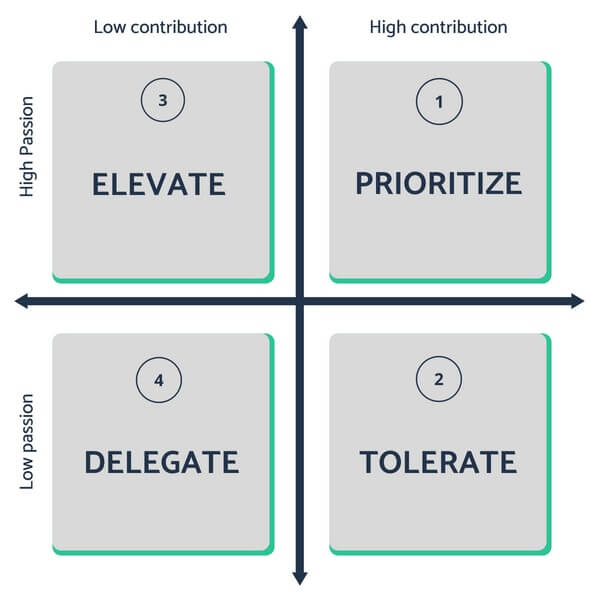A study by Robert Kaplan has shown that nearly 90% of employees do not fully understand the objectives of the company they are working for. This feeling is amplified when the manager fails to assume his responsibilities and to collaborate effectively with his subordinates.
This failure can be explained by the Peter principle, but how can it be overridden?
First of all, what is the Peter principle?
This principle comes from an empirical study which states that in a hierarchy, every employee tends to rise to his level of incompetence, with the corollary that, over time, any position will be occupied by an employee unable to assume responsibility for it.
In companies, this principle is justified by a simple logic: “Every member of a hierarchy is promoted to a higher level if he is competent in his position”, up to the position where he will stagnate due to his incompetence.
Facing a manager who is a victim of his incompetence ? It is up to you to take the lead and assume the decision-making!
Take ownership of your work
Don’t think of yourself as a worker bee! In companies, it is important to take ownership of your work and this is even more true when your manager is not able to guide you correctly.
To be in control of your work, prioritize your daily tasks and activities according to your workload and your goals to achieve. Organization and forecasting are two keys to success.
Filtrer ses priorités
Filter your priorities Once you have defined your priorities, you must filter them. Being confronted with too many imperatives and an excessive workload can be obstacles in the decision-making process. In order to make the most beneficial decisions for your business, refocus and sort your priorities using these two questions :
- What is my greatest contribution? The contribution takes into consideration the needs of the company but especially the contribution of knowledge, expertise and skills that you bring to a project.
- What am I passionate about? Passion is a key motivating and energizing factor in her work. Identifying the activities that inspire you is important for your company’s development.
Determine the next steps and the framework for your actions
Based on the two criteria of contribution and passion, it is possible to develop a matrix that allows you to order and prioritize your tasks.

Quadrant 1: These activities are usually the core of your business. They are a delicious blend of passion and contribution. It is therefore essential to prioritize these activities that give you the opportunity to share great added value while fulfilling yourself in your work.
Quadrant 2: The performance of tasks in this category does not transcend you… But you must tolerate them and give your best because of the contribution you make. None of us have the chance to do only things we are passionate about and sometimes we have to get out of our comfort zone.
This quadrant also highlights the potential for career change. When you realize that some of the activities at the heart of your job are in this section, it may be time to change in order to refocus on subjects you are passionate about!
Quadrant 3: You are passionate about these tasks, they give you renewed energy but they are not perceived at their true value by your colleagues. When the added value of your activity is controversial, you have two possibilities:
- Improve added value. When an activity is really important to you and you know that it represents unquestionable added value for your company, let it be known! Take the lead and highlight the value of this project to your colleagues so that they understand the value of the time you spend working on this topic.
- Take a step back. Although some activities may be exciting, it is important to stay on your own turf. Sometimes we all want to share our expertise and take on responsibilities that are not our responsibility. But be careful not to get lost…
Quadrant 4: All those activities that waste everyone’s time! Mail, meetings, etc., if you don’t have the ability to delegate these tasks to someone, well try to reduce the time you spend on them to a minimum. For example: only attend meetings that matter to you, sort your emails quickly and eliminate anything that won’t add value.
In order to implement this action plan, take the time to review your previous month’s schedule and group all the activities you have accomplished in each of the 4 categories using 4 colours. This retrospective highlights the distribution of activities carried out.
Then do the same with upcoming activities during your week, prioritize them with colours and take more time to do the most important ones while eliminating the most unnecessary.
An incompetent manager should not block you in the accomplishment of your work. Be a leader and make your own decisions, while consulting your hierarchy regularly. You will be in a better position and will have more satisfaction and energy to dedicate to your work.
Collaboratively define your team’s priorities using our matrix feature. Try Beekast now!
